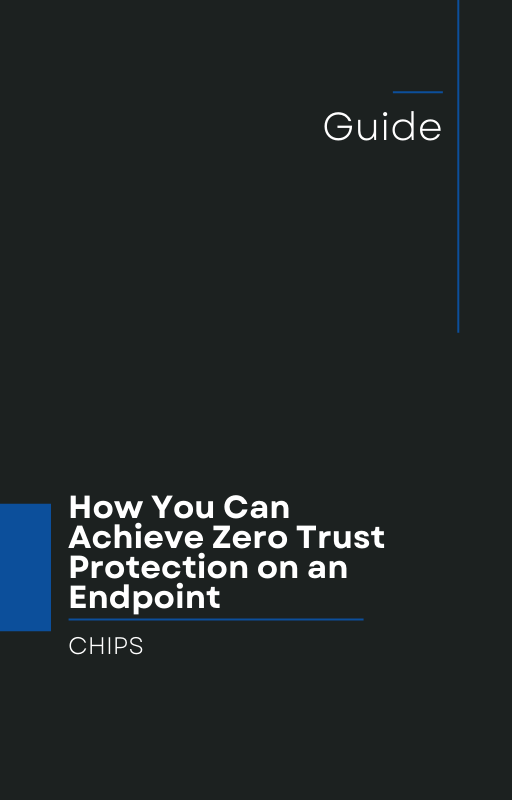Ransomware continues to evolve—and it’s showing no signs of slowing down.
A recent article from BuiltIn, "5 Ways Ransomware Will Change in 2025," outlines how attackers are refining their tactics, making traditional cybersecurity approaches less effective.
The key takeaways from this article reveal a clear trend: businesses can no longer rely solely on "Detect and Respond" strategies. Instead, it's time to shift toward "Isolation and Containment" solutions like AppGuard to prevent these threats before they ever execute.
Let’s break down the trends and why isolation is now critical:
1. Ransomware-as-a-Service (RaaS) Will Continue to Expand
The BuiltIn article emphasizes that RaaS operations are growing rapidly, lowering the barrier to entry for attackers. Even amateur hackers can now deploy sophisticated ransomware, increasing the volume and frequency of attacks.
The Challenge:
The traditional approach of detecting ransomware after it's already running on your system won’t keep up with this surge. Each attack is different, and by the time detection tools flag it, the damage is done.
The Solution:
AppGuard eliminates the need to recognize new ransomware signatures. It isolates and contains suspicious processes before they can harm your endpoints—stopping ransomware regardless of how new or "customized" it is.
2. AI and Automation Will Be Weaponized
Attackers are harnessing artificial intelligence to automate and improve their attacks. AI can now bypass detection tools, adapt in real time, and find vulnerabilities faster than ever before.
The Challenge:
Detection-based solutions are reactionary and cannot match the speed and adaptability of AI-driven threats. By the time a breach is detected, attackers have likely already exfiltrated data or encrypted files.
The Solution:
AppGuard neutralizes these AI-driven threats by preventing any unauthorized process—AI or not—from making system changes. This keeps attackers locked out of sensitive areas, no matter how fast or smart their malware becomes.
3. Data Theft Will Precede Encryption
BuiltIn predicts that more ransomware groups will focus on stealing sensitive data before encrypting files. This "double extortion" tactic pressures businesses to pay, not just to restore access, but to prevent leaks.
The Challenge:
Most endpoint detection tools focus on stopping encryption activities, but by the time they trigger, the data has already been siphoned off.
The Solution:
AppGuard blocks the unauthorized tools and scripts used to perform data exfiltration long before encryption happens. It cuts off the attacker's access right at the start—before they can even begin to steal.
4. Ransomware Will Target IoT and OT Devices
Operational technology (OT) systems and Internet of Things (IoT) devices are increasingly in the crosshairs. These devices typically lack strong security controls and are difficult to monitor using traditional detection systems.
The Challenge:
Many IoT and OT devices can’t support heavy endpoint detection and response (EDR) solutions. They also often run outdated software, leaving them vulnerable.
The Solution:
AppGuard’s lightweight, zero-trust containment approach makes it ideal for protecting IoT and OT environments. It doesn't rely on signatures, updates, or the device’s processing power, offering security even for legacy or resource-constrained devices.
5. Supply Chain Attacks Will Surge
As ransomware gangs get smarter, they’ll increasingly target suppliers and partners to compromise larger networks. The SolarWinds and Kaseya incidents proved just how devastating these attacks can be.
The Challenge:
Supply chain attacks are hard to detect because they originate from trusted partners. Malware may come bundled with legitimate software updates or system integrations.
The Solution:
AppGuard protects endpoints regardless of the source of the software. Even if a trusted vendor is compromised, AppGuard isolates suspicious behaviors, preventing malware from spreading inside your network.
Why "Detect and Respond" Is No Longer Enough
All these trends share a common theme: attackers are moving faster, smarter, and stealthier. Detection tools are always a step behind—forced to play catch-up as attackers refine their techniques. That’s why it’s time to stop reacting and start preventing.
AppGuard takes a fundamentally different approach. It doesn’t wait to detect something bad—it simply blocks processes from doing anything malicious in the first place. It enforces strict isolation policies, ensuring nothing untrusted can alter your system.
Prevention beats detection every time.
Talk With CHIPS About Moving to Isolation and Containment
The ransomware landscape is changing quickly, but your business doesn’t have to be left exposed. At CHIPS, we believe in staying ahead of the attackers, not reacting after damage is done. That’s why we advocate for AppGuard—a solution with a decade-long track record of proven success, now available for commercial use.
If you’re ready to move beyond outdated "Detect and Respond" strategies and embrace "Isolation and Containment," talk with us today. Let’s make sure your business is protected against tomorrow’s threats—before they hit.
Contact CHIPS today and find out how AppGuard can prevent incidents like the ones outlined in BuiltIn’s article.
Like this article? Please share it with others!

March 22, 2025

Comments